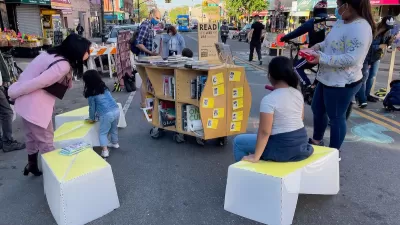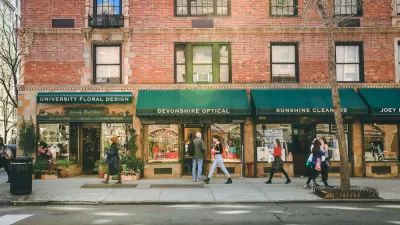Less money for highways, more for transit and "complete streets" - New Urban News takes a look at where the $1.5 billion TIGER grants are going.
The US Department of Transportation (DOT) took its first steps in early 2010 toward what may be a new approach to funding projects - one that focuses more on multimodal solutions and economic development than on highways and automobile congestion mitigation.
Transportation Secretary Ray LaHood has been talking about 'livability' - designing places and transportation systems for transit and walking as well as for car travel. In January he announced that economic development, environmental benefits, and other livability criteria would factor into DOT funding along with the traditional yardsticks of cost and congestion.
DOT showed its seriousness about these goals in late February by awarding $1.5 billion in Transportation Investments Generating Economic Recovery (TIGER) grants, part of the 2009 stimulus bill. A portion of the Tiger funds went to highways - but to a lesser degree than had been typical in the past. Streetcars, pedestrian/bicycle paths, multimodal transit centers, and transformation of automobile-oriented arterials into "complete streets" also received TIGER money.
Thanks to Renee Brutvan
FULL STORY: TIGER grants highlight new transportation paradigm

Alabama: Trump Terminates Settlements for Black Communities Harmed By Raw Sewage
Trump deemed the landmark civil rights agreement “illegal DEI and environmental justice policy.”

Study: Maui’s Plan to Convert Vacation Rentals to Long-Term Housing Could Cause Nearly $1 Billion Economic Loss
The plan would reduce visitor accommodation by 25% resulting in 1,900 jobs lost.

Planetizen Federal Action Tracker
A weekly monitor of how Trump’s orders and actions are impacting planners and planning in America.

Wind Energy on the Rise Despite Federal Policy Reversal
The Trump administration is revoking federal support for renewable energy, but demand for new projects continues unabated.

Passengers Flock to Caltrain After Electrification
The new electric trains are running faster and more reliably, leading to strong ridership growth on the Bay Area rail system.

Texas Churches Rally Behind ‘Yes in God’s Back Yard’ Legislation
Religious leaders want the state to reduce zoning regulations to streamline leasing church-owned land to housing developers.
Urban Design for Planners 1: Software Tools
This six-course series explores essential urban design concepts using open source software and equips planners with the tools they need to participate fully in the urban design process.
Planning for Universal Design
Learn the tools for implementing Universal Design in planning regulations.
Caltrans
Smith Gee Studio
Institute for Housing and Urban Development Studies (IHS)
City of Grandview
Harvard GSD Executive Education
Toledo-Lucas County Plan Commissions
Salt Lake City
NYU Wagner Graduate School of Public Service




























